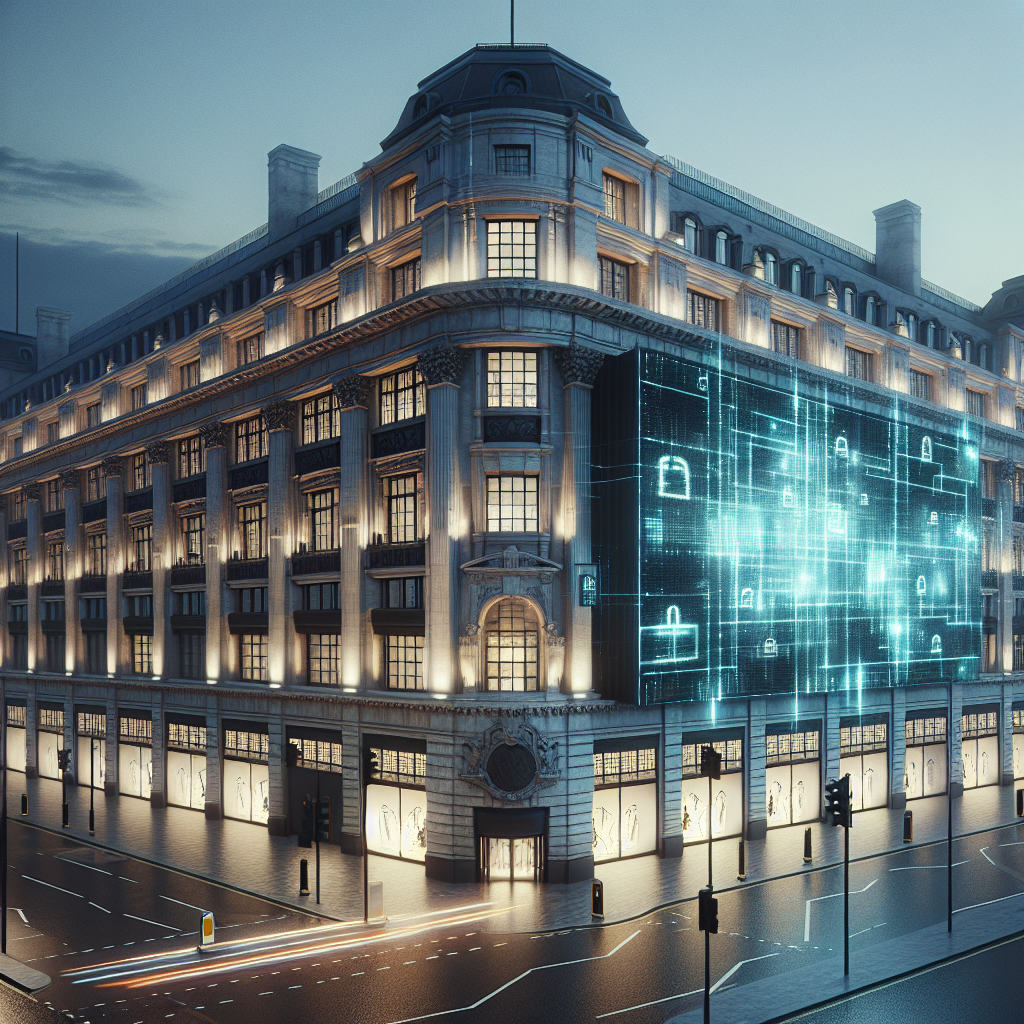Harrods, Iconic Department Store, Latest British Retailer Hit by Cyberattack
In a shocking turn of events, Harrods, the renowned British department store, has become the latest victim of a growing trend of cyberattacks targeting major retailers. As cyber threats become increasingly sophisticated, businesses worldwide are scrambling to enhance their cybersecurity measures to protect sensitive customer data and maintain their reputations. This incident raises critical questions about the security of retail environments and the implications for consumers.
The Cyberattack on Harrods
Harrods, famous for its luxurious offerings and high-profile clientele, found itself in the crosshairs of cybercriminals who have been exploiting vulnerabilities across various sectors. Although details of the attack remain under wraps, it has been reported that customer data was potentially compromised, leading to significant concern among shoppers and industry experts alike.
Some of the key aspects of the attack include:
– Timing: The cyberattack occurred during a peak shopping season, raising the stakes for the retailer.
– Methods: While specifics are limited, it is suspected that hackers utilized advanced techniques such as phishing and ransomware to gain access to sensitive information.
– Response: Harrods’ management has yet to fully disclose the extent of the breach, but measures are being taken to mitigate risks and secure customer information.
Impacts on Harrods
The fallout from the cyberattack on Harrods is expected to be substantial, with implications that extend beyond immediate financial losses. Retailers like Harrods invest significant resources in maintaining their image, safeguarding customer trust, and creating an exceptional shopping experience. A breach of this nature can have a ripple effect that may include:
– Loss of Customer Trust: Shoppers may feel hesitant to provide personal information, affecting future sales.
– Financial Ramifications: In addition to potential lawsuits, Harrods might face costs related to system recovery and enhanced security infrastructure.
– Reputation Damage: The iconic status of Harrods could be tarnished if customers perceive the store as unable to protect their information.
Broader Context: Cybersecurity in Retail
Harrods is not alone in facing cybersecurity challenges. The retail sector has increasingly become a prime target for cybercriminals, with other major retailers falling victim to similar attacks. Statistics paint a concerning picture:
– According to a report by cybersecurity experts, over 50% of retail businesses have experienced a data breach in the last two years.
– The financial losses from such breaches can average in the millions, affecting everything from customer compensation to legal fees.
– As shopping habits shift towards digital platforms, the vulnerability of e-commerce systems has been highlighted, making them attractive targets for hackers.
Lessons to Learn
The cyberattack on Harrods serves as a critical reminder for retailers across the globe. With cyber threats constantly evolving, it is essential for businesses to adopt robust cybersecurity practices. Here are some lessons to consider:
– Invest in Advanced Security Solutions: Retailers should prioritize investing in security software and hardware that can detect, deter, and respond to threats in real time.
– Employee Training: Staff should be regularly trained on cybersecurity best practices, including how to recognize phishing attempts and secure sensitive information.
– Regular Security Audits: Conducting routine assessments of security protocols and systems can uncover vulnerabilities before they are exploited.
– Data Encryption: Encrypting customer data ensures that even if it’s stolen, it remains unreadable to unauthorized users.
What Consumers Can Do
While retailers carry the responsibility of safeguarding customer data, consumers also play a crucial role in protecting themselves from cyber threats. Here are steps that shoppers can take to enhance their security:
– Use Strong Passwords: Create complex passwords that are hard to guess and change them regularly.
– Monitor Financial Accounts: Regularly check bank and credit card statements for any unauthorized charges.
– Enable Two-Factor Authentication: Whenever possible, enable two-factor authentication to add an extra layer of security to online accounts.
– Be Cautious with Personal Information: Limit the amount of personal information shared online and be wary of unsolicited requests for sensitive data.
Moving Forward: The Future of Retail Cybersecurity
The cyberattack on Harrods illustrates an alarming trend in the retail industry that demands immediate attention. As technology evolves, so do the tactics used by cybercriminals. The future of retail will likely involve a greater commitment to cybersecurity, with retailers adopting a proactive stance toward protecting customer data.
In conclusion, the iconic status of Harrods may be tarnished by this incident, but it also offers an opportunity for growth and improvement in the realm of cybersecurity for the entire retail sector. By learning from this breach, retailers can work towards creating a safer shopping environment that fosters trust and ensures customer safety. As a consumer, staying informed and vigilant can contribute significantly to your personal security and help promote a more secure digital shopping landscape.



